The silk islands of Koh Dach
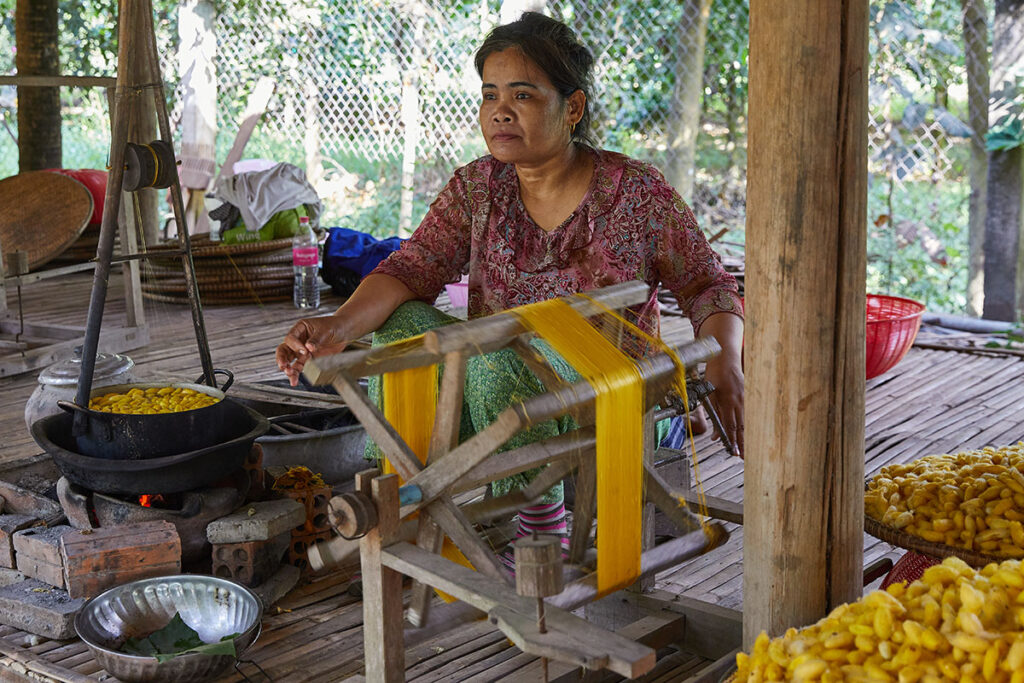
The silk islands of Koh Dach
Where are the worms, I asked. “There,” said the lady pointing at a dinner plate-sized forest of shredded mulberry leaves, “They have only just hatched.” I leaned forward and squinted. Sure enough, like tiny specks of grey fluff, I saw dozens of minute caterpillars happily munching away at their bed of leaves. The previous generation had already pupated, I would meet them later.
Koh Dach and its smaller neighbour, Koh Toch, are islands in the Mekong River not far from its confluence with the Tonle Sap and just to the east of Phnom Penh. In recent years they have become known for their traditions of sericulture and weaving.
It is possible to book tours to visit them but I prefer not to be tied to other people’s schedules so I organised a tuk-tuk of my own. We first crossed the Tonle Sap over the Cambodia-Japan Friendship Bridge, followed by a creaky old car ferry across the Mekong to Koh Dach. We zipped across the southern end of Koh Dach and over another bridge to Koh Toch.
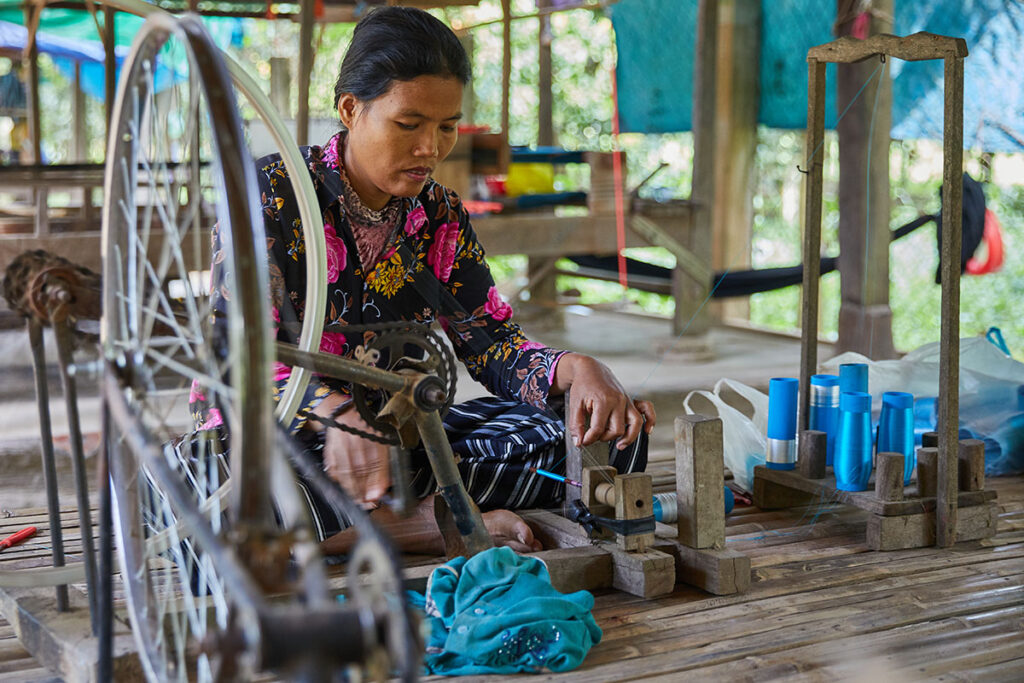
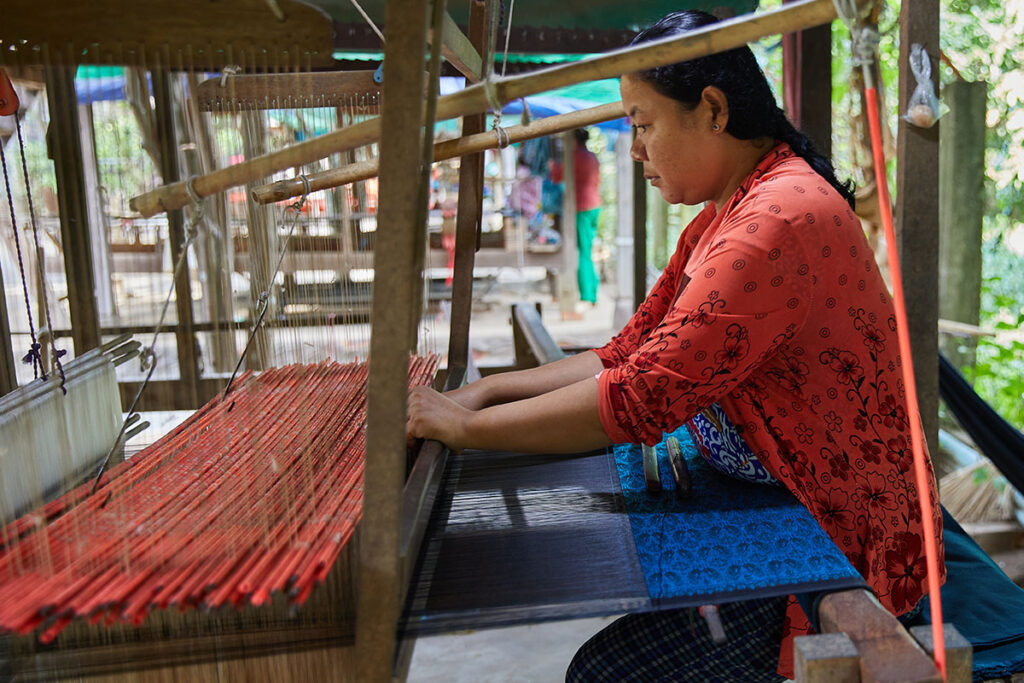
Spinning with the aid of an old bicycle (left). Weaving the cloth, one strand at a time, into fabulous patterns
In no more than twenty minutes we had gone from the bustle of Phnom Penh to rural Cambodia where life moves at an altogether slower pace. We swung left and barrelled along a dirt road with fields of vegetables left and right and a horse and cart ahead. We slowed down as we passed so as not to shower them with dust in our wake. The only building in sight was a small spirit house next to a tree
Presently the tuk-tuk crunched to a halt at the gates of Silk Island, I paid a dollar for admission and, since I was the only visitor, had the place to myself. It is always a treat to see traditional crafts in action and while Silk River may be one part museum it is also a working village.
The infant silkworms that I had already met would, after having fattened up substantially, be pupating in about eighteen to twenty days. The cocoon is made up of a single strand of silk which is held together with a natural gum called sericin. Boiling them in water dissolves the sericin allowing the silk thread to be unwound (main picture). A single strand can be as much as a hundred metres long.
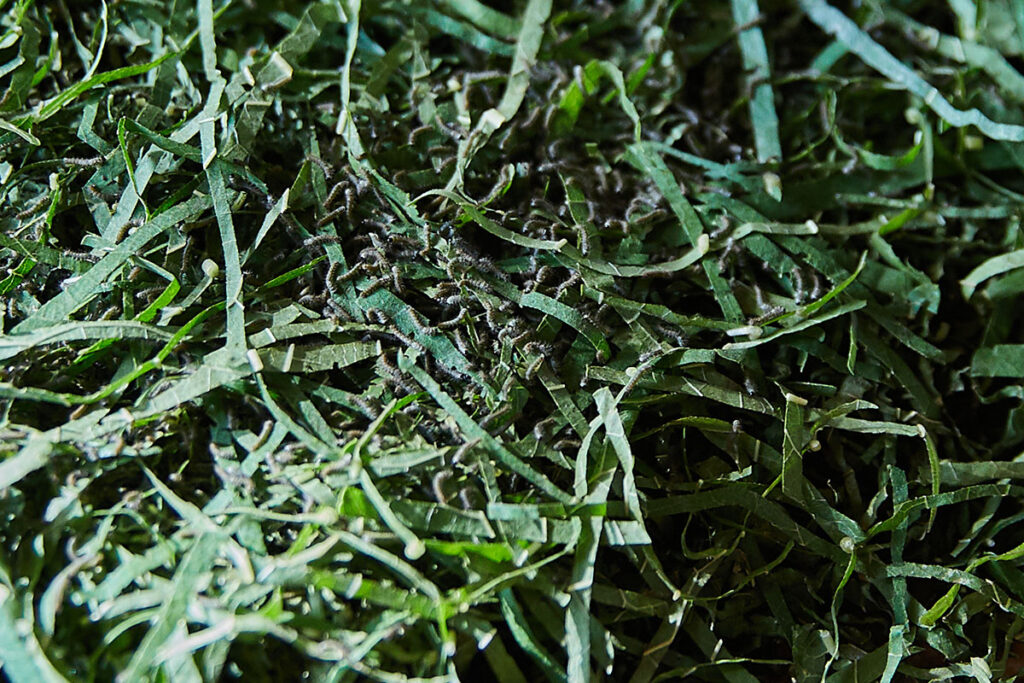
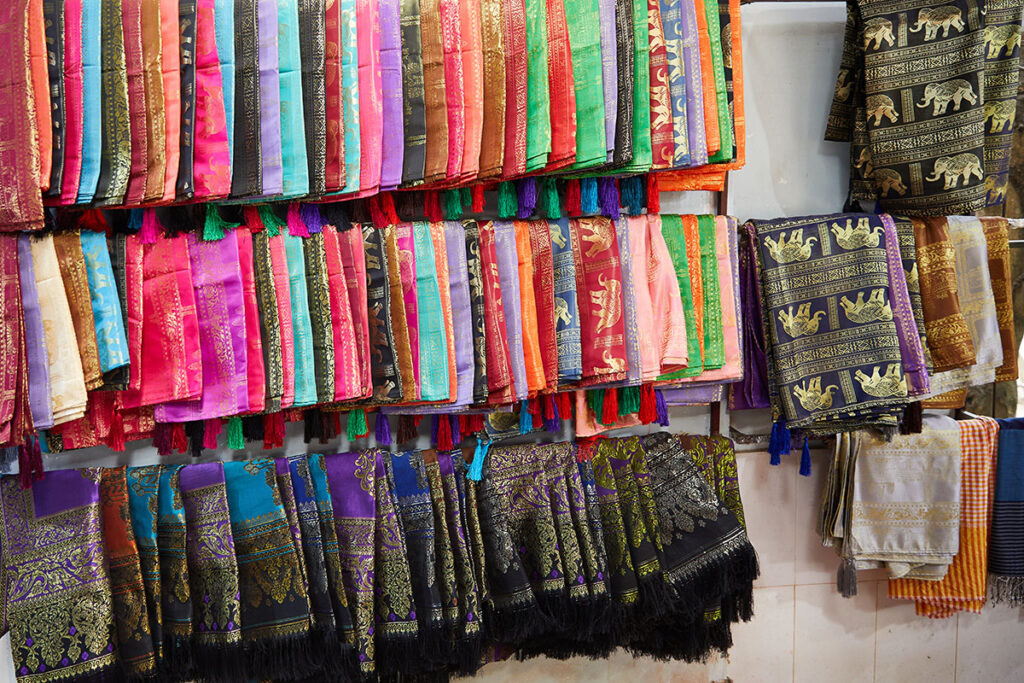
The silk worms are barely visible on their bed of shredded leaves (left) but the fabrics they produce are outstanding
These fine strands are washed, to ensure any remaining gum, is removed before first bleaching and then dyeing. Spinning is done with the assistance of a pair of repurposed bicycle wheels which may look a little rustic but are, in fact, fast and efficient.
Finally, it is off to the looms. I didn’t see the setting up of a loom, it is a lengthy process. When you see the looms in action it is easy to understand why. So many moving parts to marshall the various threads into position. The more complex the design the more, the more complex the setup. But in the hands of skilled artisans, the results are breathtaking.
Read also: A model businesswoman